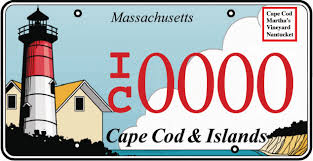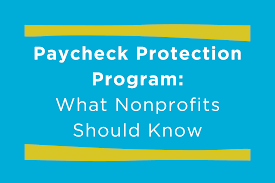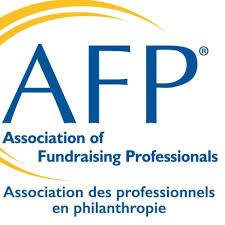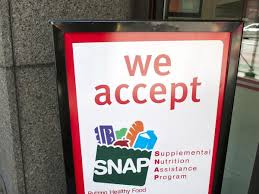 The Cape Cod Commission, on behalf of the Barnstable County Board of Regional Commissioners and the Barnstable County Economic Development Council (BCEDC), has awarded more than $136,000 in grant funds through the Barnstable County License Plate Grant Program to support COVID-19 Recovery and Resiliency projects. The Barnstable County Board of Regional Commissioners voted unanimously to award the following six grants: $25,0000 to Sustainable Cape: Center for Agricultural Preservation and Education to expand access to locally grown and produced foods $25,000 to Love Live Local for the Cape Cod Resilience Fund to provide economic relief to Cape Cod’s small business community $24,802 to Cape Cod Community College to develop the curriculum for the Massachusetts Community Health Worker program $25,000 to the Arts Foundation of Cape Cod to support Cape Cod arts and cultural organizations as they work to recover and reopen $11,545 to Cape Cod Young Professionals to support workforce retention and development through CCYP’s new Laser-Focused Coaching Program $25,000 to the Lower Cape Community Development Corporation to provide comprehensive business support to Lower-Cape based small businesses The Barnstable County License Plate Grant Program, funded by proceeds from the sale of Cape Cod and Islands specialty license plates, is intended to support regional priorities for economic development and achievement of long-term economic diversity and sustainability. The funding was made available to local or regional governmental or nonprofit agencies for projects that support recovery efforts from the COVID-19 pandemic and resiliency to such impacts in the future. Projects proposed were required to address a documented impact of the pandemic and align with and support implementation of the region’s Comprehensive Economic Development Strategy (CEDS). Eighteen proposals were submitted in response to a Request for Proposals issued in June. The BCEDC recommended six proposals for funding, which were approved by the Barnstable County Board of Regional Commissioners.
0 Comments
Proposition 15: Increases Funding for Public Schools, Community Colleges, and Local Government Services by Changing Tax Assessment of Commercial and Industrial Property. Initiative Constitutional Amendment. Yes/No Statement A YES vote on this measure means: Property taxes on most commercial properties worth more than $3 million would go up in order to provide new funding to local governments and schools. A NO vote on this measure means: Property taxes on commercial properties would stay the same. Local governments and schools would not get new funding.  Dr. Priscilla Chan and Mark Zuckerberg Dr. Priscilla Chan and Mark Zuckerberg The Legislative analysis states that increased property taxes on commercial properties worth more than $3 million will provide $6.5 billion to $11.5 billion in new funding to local governments and schools. 60% would go to cities, counties, and special districts. Each city, county, or special district’s share of the money depends on several things including the amount of new taxes paid by commercial properties in that community. Not all governments would be guaranteed new money. Some in rural areas may end up losing money because of lower taxes on business equipment. The other 40% would increase funding for schools and community colleges. Each school or community college’s share of the money is mostly based on how many students they have. ‘Property’ Includes Land, Buildings, Machinery, and Equipment. The measure requires commercial and industrial (after this referred to simply as “commercial”) land and buildings to be taxed based on how much they could be sold for instead of their original purchase price. This change is put in place over time starting in 2022. The change does not start before 2025 for properties used by California businesses that meet certain rules and have 50 or fewer employees. Housing and agricultural land continues to be taxed based on its original purchase price. The measure reduces the taxable value of each business’s equipment by $500,000 starting in 2024. Businesses with less than $500,000 of equipment pay no taxes on those items. All property taxes on business equipment are eliminated for California businesses that meet certain rules and have 50 or fewer employees. The Chan Zuckerberg Initiative (CZI) was founded by Dr. Priscilla Chan and Mark Zuckerberg in 2015, and according to the website, is a new kind of philanthropy that’s leveraging technology to help solve some of the world’s toughest challenges — from eradicating disease, to improving education, to reforming the criminal justice system. To date, CZI has granted $1.805 million to the campaign and is contributing an additional $4.5 million, bringing total support for the measure to just over $6.3 million. CZI is also granting $1 million to the No on Proposition 20 campaign to oppose a measure that would incarcerate more people for low-level crimes and increase already bloated prison budgets. “For generations, there has been profound inequity in the way we resource local services — with disinvestment over time and an increasingly limited ability for local communities to address their most pressing needs,” said Michael Troncoso, Head of Justice & Opportunity at CZI. “Even before COVID-19, Black and Brown communities have lacked the resources needed to sustain adequate local health care systems, protect essential workers, and support our schools. This systematic disinvestment was built into the law, and we now have the historic opportunity, through Proposition 15, to correct it and get our communities the support they need.” Campaign Finance Reports from the Secretary of State show the payments made by CZI.
22,000 nonprofits will close their doors for good in the next 3 years? Michael Towner, Iconic Legacy7/23/2020  It is projected that 22,000 nonprofits will close their doors for good in the next 3 years as a result of the economic crisis. That's the median of several scenarios projected by Candid; it assumes the economic downturn will last 24 months. The 22,000 figure represents a failure rate of 7% among the 315,698 U.S.-based nonprofits whose financial data Candid examined in a new study. Dan Parks reports the new paper presents a less dire forecast than many experts have predicted. "The majority of nonprofit organizations are positioned to weather this storm," the report states. Some charities are hailing the Paycheck Protection Program as a financial saviour, but others say it provided only a brief respite from layoffs and other cost-cutting measures. According to new estimates from the Dorothy A. Johnson Center for Philanthropy at Michigan’s Grand Valley State University, the program saved 4.1 million nonprofit jobs, about a third of all nonprofit jobs in the nation. The study estimated that about 40 percent of eligible nonprofits received a loan and that nearly two-thirds of eligible nonprofit jobs were protected by PPP funds. The study noted that many smaller nonprofits in particular may have missed out by either not applying for loans or not successfully filling out applications. Which kinds of groups have gotten the money so far? Religious organizations, followed by elementary and secondary schools, and civic, social, or social-advocacy organizations, were the most common recipients of PPP loans, According to the data, 42,462 nonprofit organizations received loans of between $150,000 and $10 million. The goal of the Paycheck Protection Program is to encourage employers to keep their workers on the payroll during the coronavirus pandemic. If employers maintain their work force, the loans are mostly forgivable. Of those 42,462 nonprofits, 9,238, or 21.8 percent, were religious organizations; 5,647, or 13.3 percent, were elementary and secondary schools; and 6.3 percent were civic, social, or social-advocacy organizations.  In a survey conducted by the Association of Fundraising Professionals members conducted in May, 2% of respondents said they had been laid off. 20% said their organizations had laid off staff, 23% percent said they had instituted furloughs, and 18% had cut staff pay. Groups that have long relied on in-person fundraising events or revenue from ticket sales are making tough decisions about which fundraising roles are indispensable. Organizations have not eliminated fundraising positions at the same pace that they have laid off people in other departments, says Mike Geiger, President of the Association of Fundraising Professionals. "So far, our numbers are really low in terms of fundraisers being laid off," he says. "I think that is because organizations understand the importance of keeping revenue-generating positions. Fundraisers are the bridge between the donor and the cause. If you break that bridge, if you destroy that bridge, you lose that connection. I think that a lot of CEOs get that, and they might get it now more than they ever did." But even for CEOs and other leaders who understand and value their fundraisers, making staffing decisions when revenue is drying up is a tough balancing act. What is clear is that some organizations and fundraising teams have been harder hit than others. The American Cancer Society has long relied on large in-person fundraising events. And Covid-19 has hit that model especially hard. As events had to be postponed and ultimately canceled or shifted online, the Cancer Society quickly realized it would have to cut costs. The organization did not go to personnel right away, says Mike Neal, the senior executive vice president for field operations. First, it looked to reduce expenses for things like meetings and travel, and postponing events like the Relay for Life walks resulted in some cost savings. But in June, the charity laid off around 1,000 staff members. About 200 were fundraisers, Neal says. The group expects to bring in around $200 million less in 2020 than it had forecast before the coronavirus struck. Smaller groups are also making these tough choices. Cherian Koshy is director of development at Des Moines Performing Arts, an organization that presents visiting plays and other performances — all of which have been canceled or postponed indefinitely. Despite "exceptional" fundraising in recent months, there is no getting around the fact that the organization's business model is partially driven by the money it earns from ticket sales. "Even with a lot of fundraising that has happened over the course of these last few months and the generosity of our donors, it's not enough to keep our entire staff at that total 100 percent, especially when we don't have a date to reopen," he says. So far, Koshy has not had to lay anyone off, but he has had to cut hours. As of July 1, his development team of five people is working the equivalent of 3.5 full-time jobs. "When we talk about lifeboat ethics, there's no good decision about who needs to be tossed off the boat and who gets to stay on," he says. "Everybody's roles are essential in some nature; otherwise, they wouldn't be on the boat in the first place." At some organizations, veteran development directors and senior leaders are getting virtual pink slips, too — delivered via Zoom or over the phone. Barbara Perlov was laid off from her position as director of foundation and government relations at the Boys' Club of New York at the end of March.
The organization has historically relied on wealthy individuals and events, but Perlov was leading the charge to increase support from institutional donors. And even through the pandemic, she saw great potential. She had been working to build relationships with grant makers. Getting the news of her layoff "was shocking," she says. "No doubt about it." "Just getting my head wrapped around the fact that my job was ending was pretty emotional," she says, "not to mention, the personal things going on in my life that I needed to address: what I was going to do about health care, about applying for unemployment." Fundraisers — those who are recently unemployed and those who are plugging away from their home offices — are facing compounding stressors right now. Several fundraisers have lined up part-time consulting work to pay the bills and support organizations in their efforts to raise money through the crisis.  Food stamps — formally known as the Supplemental Nutrition Assistance Program, or SNAP — support young and old, healthy and disabled, the working and the unemployed, making it the closest thing the United States has to a guaranteed income. Though administered by states, the benefits are paid by the federal government, with no spending cap, and the program has largely avoided the delays that have plagued unemployment insurance. After long pushing to reduce SNAP usage, claiming it promotes dependency and waste, the Trump administration eased administrative rules during the pandemic to speed enrollment. Two Republican-led states, Florida and Georgia, have expanded caseloads the most, and state officials from both parties have called the program an essential antipoverty tool. About 43 million people — roughly one of every eight Americans — now receive SNAP. More than six million people enrolled in food stamps in the first three months of the coronavirus pandemic, an unprecedented expansion that is likely to continue as more jobless people deplete their savings and billions in unemployment aid expires this month.  Thirty states have experienced double-digit growth, and usage has risen in all 133 counties in the three West Coast states. About 50,000 people have joined the rolls in the county that includes Atlanta, more than 100,000 in the county that includes Detroit and more than 200,000 in those that include Miami and Los Angeles. No state has seen more growth than Florida, which has added nearly a million residents to the rolls. Among the new centers of SNAP usage is Orlando, where a region known for flights of fantasy became a center of nutritional need. With amusement parks closed and tourism vanishing, caseloads in Orange and Osceola Counties rose more than 50 percent, adding nearly 125,000 people. From February to May, the program grew by 17 percent, about three times faster than in any previous three months, according to state data collected by The New York Times. Its rapid expansion is a testament to both the hardship imposed by the pandemic and the importance of a program that until recently drew conservative attack. The rolls have surged across Appalachian hamlets, urban cores like Miami and Detroit, and white-picket-fence suburbs outside Atlanta and Houston, rising faster in rich counties than in poor ones, as the downturn caused by the virus claimed the restaurant, cleaning and gig economy jobs that support the affluent. Despite SNAP’s expansion, surveys continue to show high rates of “food insecurity” — reduced quality of food or uncertain access — as well as outright hunger. A new survey by the Urban Institute found 17.7 percent of adults report food insecurity, much higher than pre-crisis levels. The rate for Black people and Latinos was about twice as high as for whites.  As Congress returns this week, Democrats want to increase the maximum benefit by 15 percent, noting that food prices have risen to the highest level in nearly a half-century. Aside from SNAP, there is a growing need for nonprofit services during and after the pandemic that will outpace the capacity and resources of organizations and according to a recent report, the possibility that 10% to 40% of nonprofit groups will be forced to close or merge with other ones, and there will be much less government money to help pay for the services organizations deliver. The Trump administration says that the next coronavirus aid package, which is expected to top $1 trillion, should focus on 'kids and jobs and vaccines.' Negotiations between congressional Republicans and the White House hit snags over the weekend and talks between the GOP and Democrats have been nearly non-existent. Treasury Secretary Steve Mnuchin said that Republicans are committed to passing legislation by the end of the month to protect unemployed Americans who have been receiving enhanced benefits, though he suggested it won't be as much as the current level of $600 extra in unemployment insurance per week. "We're going to make sure that we don't pay people more money to stay home than go to work. We want to make sure that people who can go to work safely can do," he said. "We'll have tax credits that incentivize businesses to bring people back to work. We'll have tax credits for PPE for safe work environments, and we're gonna have big incentives, money to the states for education for schools that can open safely and and do education." Republicans also want to offer liability protections for schools, colleges, charities, businesses and frontline health care workers and employers who follow public health guidelines. "We don’t need an epidemic of lawsuits on the heels of a pandemic," said McConnell. Some Senate Republicans are pushing back against a White House attempt to block billions of dollars for coronavirus testing and tracing contacts of individuals infected with the coronavirus, two Republican sources told NBC News on Sunday. News of the White House push to block the funding was first reported by The Washington Post. Congress doesn’t have much time to negotiate and pass the legislation — lawmakers have only a few weeks left in Washington before their annual summer recess in August which will be focused on their own interests of campaigning, collecting campaign contributions and the two parties’ conventions in advance of the November election with no mention by either party of any extended session to address the resurgence of the pandemic. For more, click here.
 Based on factors like political stability, corporate governance, risk environment and supply chain logistics and transparency, FM global paired these rankings with their country’s initial response to the virus, and identified the nations across the globe that have a high likelihood of maintaining stability and resilience through the crisis. To capture the United States’ broad geographic footprint, the index split up the country into West, Central and East regions, but as a whole, the US ranked well (9th, 11th and 22nd, respectively) for its low-risk business environment and strong supply chain. Top 10 most resilient countries, according to the 2019 Global Resilience Index 1. Norway 2. Denmark 3. Switzerland 4. Germany 5. Finland 6. Sweden 7. Luxembourg 8. Austria 9. US Central 10. United Kingdom Danish culture, which tends to be trusting of authority and willing to stand together for a common cause, has also had an impact on the effectiveness of the measures. “The word ‘samfundssind’ (which roughly translates to “civic sense” or “civic duty”) is the new buzzword in Denmark on both social and traditional media, and most people feel a moral duty to make sacrifices for the sake of public health,” said Aarup Christiansen. “No-one wants to be called out for being responsible for endangering the lives of senior citizens just because they won’t give up their usual luxuries.” Ranked 12th-most resilient in the index, New Zealand scores especially high in corporate governance and its supply chain. The country has also been able to move quickly to contain the spread of the virus by shutting borders to international travellers on 19 March and enacting a non-essential-business lockdown on 25 March. See the full list here The $2 trillion stimulus bill expands the charitable deduction to all taxpayers for a year, makes nonprofits eligible for federal loans that could be largely forgiven, and boosts tax incentives for corporate giving, according to nonprofit analysts. Currently, only people who itemize their taxes can claim charitable deductions. The stimulus bill will allow nonitemizers to deduct up to $300 in cash giving for the 2020 tax year, according to an analysis of the legislation by the National Council of Nonprofits. Donations to donor-advised-fund accounts would not qualify for the nonitemizer deduction, according to Dean Zerbe, national managing director at AlliantGroup and a former top tax aide for the Senate Finance Committee. Nonprofits have long sought a "universal deduction," especially since the tax law of 2017 roughly doubled the standard deduction and sharply reduced the number of people who itemize their taxes. The Senate voted unanimously Wednesday to pass the bill. The House is expected to approve it today, and President Trump has said he will sign it. For those who itemize, the bill lifts the cap on annual giving from 60 percent of adjusted gross income to 100 percent. For corporate charitable giving, the bill raises the annual limit from 10 percent to 25 percent of taxable income. The cap on deductibility of food donations from corporations would increase to 25 percent of taxable income, up from the current 15 percent cap. More Help for Nonprofits
Other provisions of the bill affecting charities, according to the National Council of Nonprofits and other sources:
Although nonprofit advocates are seeking more federal help for charities than the bill provides, including a $60 billion aid package specifically for nonprofits, there was widespread approval of the legislation with hopes for more to come later, including expanding the universal deduction. "There is much to celebrate in this deal, but still a lot of advocacy needed," said Tim Delaney, president and CEO of the National Council of Nonprofits, in an emailed statement. "Additional funding resources will be absolutely critical in the months to come," wrote Charlotte Haberaecker, CEO of Lutheran Services in America. Independent Sector, a Washington-based nonprofit membership organization. By Dan Parks, Chronicle of Philanthropy. |
BLOGArchives
January 2025
Categories
All
|
